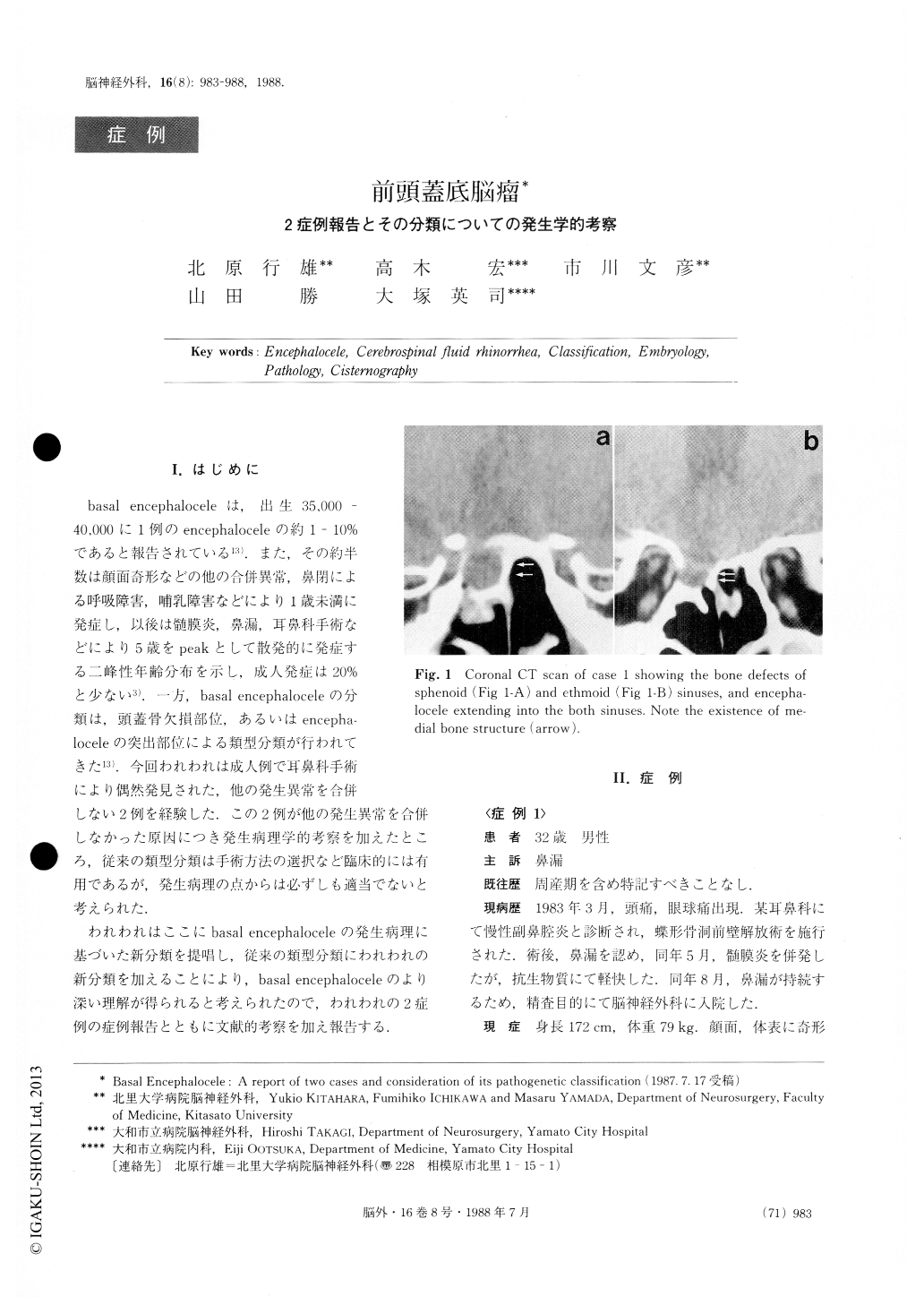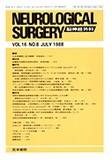Japanese
English
- 有料閲覧
- Abstract 文献概要
- 1ページ目 Look Inside
I.はじめに
basal encephaloceleは,出生35.000—40.000に1例のencephaloceleの約1-10%であると報告されている13).また,その約半数は顔面奇形などの他の合併異常,鼻閉による呼吸障害,哺乳障害などにより1歳未満に発症し,以後は髄膜炎,鼻漏,耳鼻科乎術などにより5歳をpeakとして散発的に発症する二峰性年齢分布を示し,成人発症は20%と少ない3).一方,basal encephaloceleの分類は,頭蓋骨欠損部位,あるいはencepha—loceleの突出部位による類型分類が行われてきた13).今回われわれは成人例で耳鼻科手術により偶然発見された,他の発生異常を合併しない2例を経験した.この2例が他の発生異常を合併しなかった原因につき発生病理学的考察を加えたところ,従来の類型分類は手術方法の選択など臨床的には有用であるが,発生病理の点からは必ずしも適当でないと考えられた.
われわれはここにbasal encephaloceleの発生病理に基づいた新分類を提唱し,従来の類型分類にわれわれの新分類を加えることにより,basal encephaloceleのより深い理解が得られると考えられたので,われわれの2症例の症例報告とともに文献的考察を加え報告する.
The authors have experienced two cases of basal en-cephalocele without intra and extra cranial anomalies. We have reviewed previous reported cases and studied, from the view point of developmental pathology, reasons why these cases did not have associated ano-malies. In this paper we will report our two cases of basal encephalocele and propose a new classification for it, based upon the developmental pathology of the basal part of the skull and associated anomalies.
Case 1. A 32 year old male complained of con-tinuous rhinorrhea for 8 months.

Copyright © 1988, Igaku-Shoin Ltd. All rights reserved.


